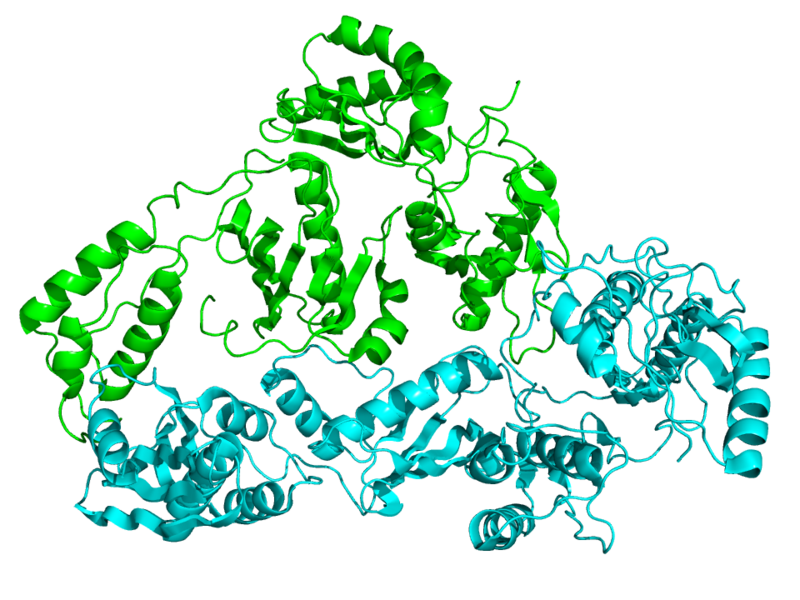
Today, reverse transcriptases are commonplace molecular biology tools, easy to obtain and routinely used in labs for everyday cloning and gene expression analysis experiments. Reverse transcriptase inhibitors have also found widespread use as antiviral drugs in the treatment of retroviral infections.
It’s easy to forget that the existence of reverse transcriptase activity—the ability to convert an RNA template into DNA—was once a revolutionary notion not easily accepted by the scientific community. The idea that RNA could be the template for DNA synthesis challenged the “DNA–>RNA–> Protein” central dogma of molecular biology.
The foundational studies that proved the existence of a reverse transcriptase activity in RNA tumor viruses were described in two papers published back-to-back in Nature in June, 1970. Two of the authors of these studies, Howard Temin of the University of Wisconsin and David Baltimore of the Massachusetts Institute of Technology, were awarded a Nobel Prize for their work in 1975.
In appreciation of the significance of these papers, the editorial introduction published in Nature at the time states:
This discovery, if upheld, will have important implications not only for carcinogenesis by RNA viruses but also for the general understanding of genetic transcription: apparently the classical process of information transfer from DNA to RNA can be inverted.
Before these papers were published, it was known that successful infection of cells by RNA tumor viruses required DNA synthesis. Formation of virions could be inhibited by Actinomycin D—an inhibitor of DNA-dependent RNA polymerase—so it was known that synthesis of viral RNA from a DNA template was part of the viral life cycle. The existence of an intracellular DNA viral genome was therefore indicated, and had been postulated by Temin in the mid 1960’s. However, proof of the mechanism whereby this DNA template was generated from the RNA genome of the infecting virus remained elusive.
In their papers, both Temin and Baltimore describe similar sets of experiments that demonstrated the existence of an RNA-dependent DNA polymerase activity for the first time. They showed that the RNA tumor viruses Rauscher Mouse Leukaemia Virus and Rous Sarcoma Virus both contained an enzyme that converted the viral RNA genome into an intracellular DNA form.
Looking back on classic papers such as this one, I am struck by the elegant simplicity of the methodology and the clarity of the experimental design. In short, they asked the right questions and then designed experiments to answer these specific questions. Then they tied up loose ends by ruling out alternative explanations for their observed results. Here are the key questions they asked:
Can Isolated RNA Tumor Viral Particles Synthesize DNA?
To answer this question, viral particles were purified and incubated in a DNA synthesis reaction using a deoxynucleotide mix that included radiolabeled dTTP. An acid-insoluble product was generated, and the amount of product formed was proportional to the number of viral particles present. Heat treatment or trypsin digestion eliminated the activity, suggesting that a preformed protein present in the viral particles was responsible. The association of the polymerase activity with the virions was further demonstrated by isolating the viral particles by sucrose density gradient centrifugation and showing that the polymerase activity co-isolated in the same fraction as the viral particles.
Is the Reaction Product Really DNA?
To confirm the nature of the product of the polymerase reaction, both authors tested its sensitivity to DNase and RNase, confirming sensitivity to the former.
Is the Template RNA?
To confirm that the template is indeed the viral RNA, the polymerization reaction was performed in the presence and absence of ribonuclease. As expected, no DNA was synthesized when ribonucleases were included in the reaction.
Could the Observed Activity Be the Result of Conventional Polymerase Activity?
In both papers, the RNA tumor viruses R-MLV and Rous Sarcoma virus were also tested for the ability to incorporate rNTPs into acid-insoluble product. Neither was capable of synthesizing RNA, only showing polymerase activity when dNTPs were provided in the reaction mix.
Ideas that Challenge Conventional Thinking
And that’s it. These few simple experiments are all that is included in the papers. To me, this brevity and simplicity is an illustration of the effectiveness of the scientific method. First, these authors made an observation of the known facts (a DNA form seems to be involved in the life cycle of viruses with an RNA genome). They then had the vision and inventiveness to formulate a theory that explained those facts, even although that theory went against everything currently known about DNA at the time. Finally, they designed and performed a key set of experiments to test whether the theory was true.
When you have done all that, your experiments pretty much speak for themselves.
Here are the Papers:
- Baltimore, D. (1970) Viral RNA-Dependent DNA Polymerase. Nature 226, 1209-11.
- Temin, H., and Mizutani, S. (1970) RNA-Dependent DNA Polymerase in Virions of Rous Sarcoma Virus. Nature 226, 1211-1213.
Isobel Maciver
Latest posts by Isobel Maciver (see all)
- 3D Cell Culture Models: Challenges for Cell-Based Assays - August 12, 2021
- Measuring Changing Metabolism in Cancer Cells - May 4, 2021
- A Quick Method for A Tailing PCR Products - July 8, 2019
